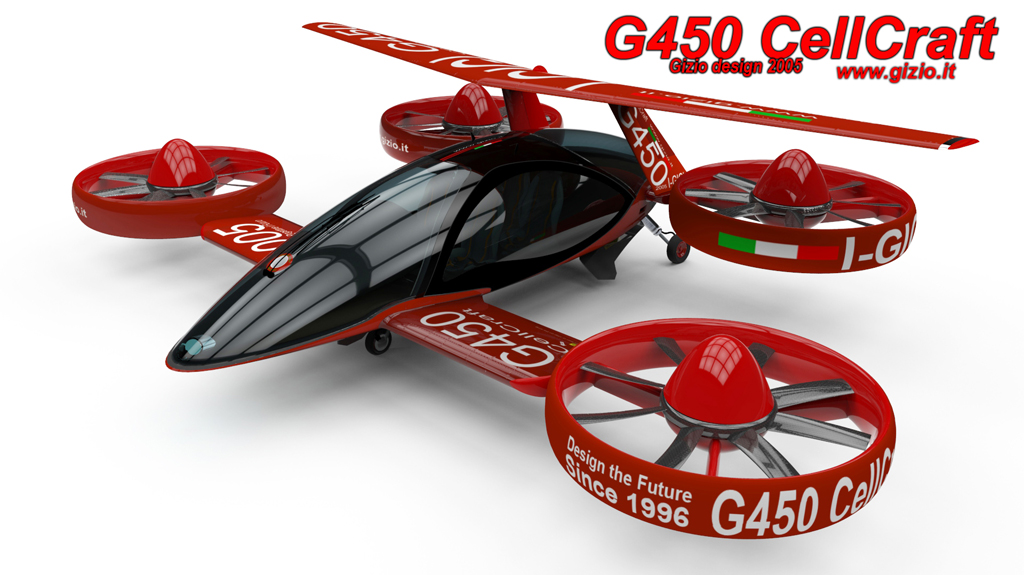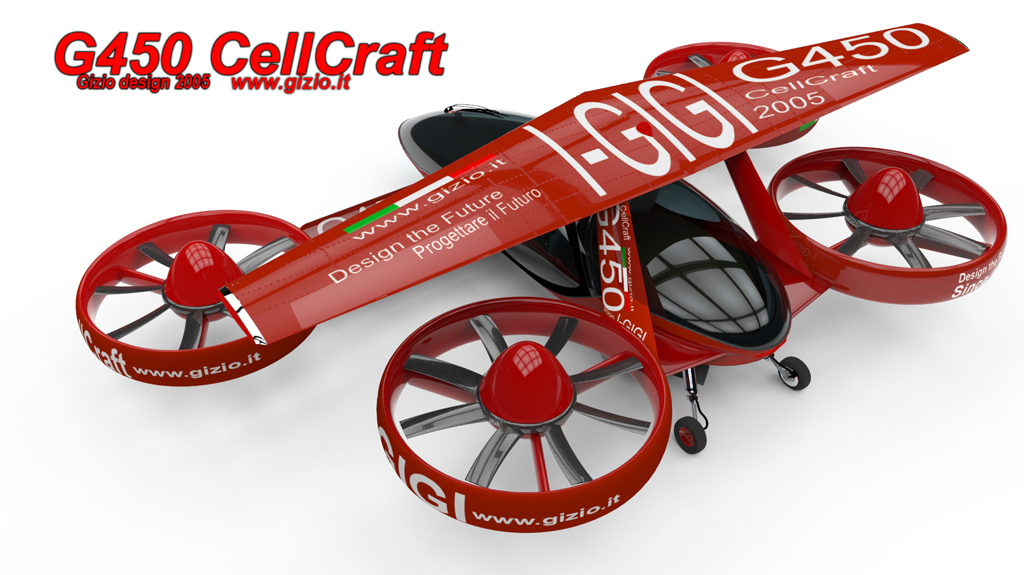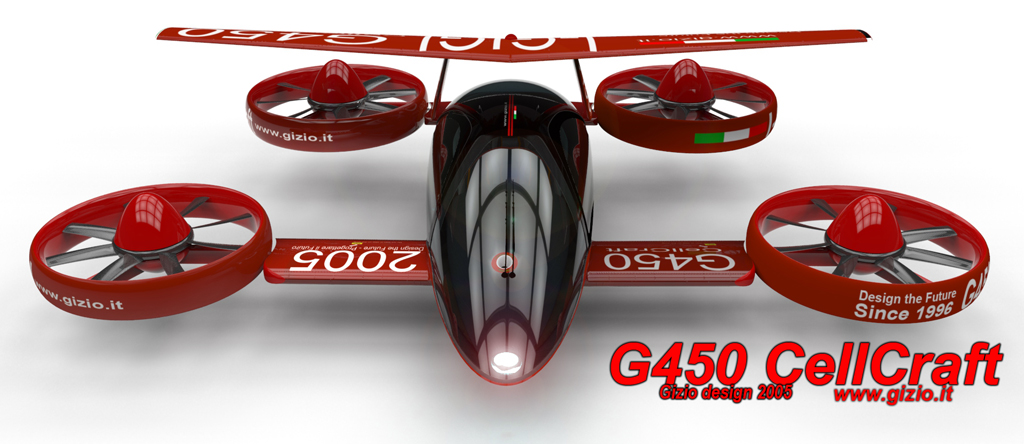The Aircraft CellCraft
is an alternative concept of a new type of aircraft since the
beginning of 1996 as a basic conceptual idea
addressed to a new type of aircraft. The project in the basic
concept is not very detached from what a helicopter or an airplane
still
represent today, since the aircraft is capable
to fly in both way, however it is pretty much different from both
aircraft's tipology, something rather unusual but at the same
time it can maintain the properties of both helicopters and airplanes.
Mr. MOLLER (Moller Skycar M 400), did already built a prototype of an aircraft rather interesting called "SKY CAR" while many others like him - including my self - are still experimenting comprable solutions. Time and technology are both working to improve the quality of materials in all aspect: durability, lightness, mechanical strength etc. Therefore no one can really know what it will bring to us though the future is always waiting around the corner to suddenly show up. |
 |
As former helicopter pilot, and historian of vertical flight I had the opportunity to study the problem of the vertical mobility very close, experiencing directly through hours of flight, allowing me to have a clear analysis of technical issues related to these type of aircraft. (Helicopter aerodynamics) CellCraft projects in brief is an aircraft that could maintain the same property of the extraordinary helicopters, but combined with the typical speed of fixed-wing aircraft, and most important maintain a very high levels of security and flexibility as well. That means that a such type of machine should be capable to land and take off vertically, as well flying at high “appreciable” speed. Since the beginning I started with the constant idea of designing an aircraft that summed up in the concept more or less of both helicopters and airplanes be capable of the same performance and I called this machine: CELL-CRAFT © or "G". The
CELL-CRAFT©
today isn’t the sole project of this kind, as well as many
other it is an alternative aviation idea, it rather represents
a concentration of research in various fields of a futuristic
scenario next too come. It is a type of aircrafts developed on
different platforms. The concept of horizontal-vertical flight
in few words means: new environment and architecture of
the cockpit, and a new way of interaction between
man and machine, that makes this project pretty much
different from the classic idea of an aircraft as we know it today.
The CellCraft came
out while developing both the style and the architectural structure
of a modular flying system. There are several types of Gs (CellCraft) and many different versions for any appropriate roles. My attempt over here is to make a description of the most representative projects in a the most easy way, leaving the reader having a clear view of the entire matter. This site will also be updated with the latest design variations or versions of the related projects, finally a historical section shows the whole evolution process that took the long way over the course of the years since 1996. Architecture of the Aircraft: G450-455 In
2003, contemporary with the development of the
project G440, almost
completed, I decided to revise the original concept once again,
starting from the first project, making a review of that machine
originally designed in 1996: the G150.
The G150’s project or a possible variation of the most recent (G450-455), was now perfectly feasible and more advanced than the original design exercise, and after all quite contemporary. I like to think about the future to something we alredy have but we should be patient while waiting for, whatever it is it will eventually become real soon or later. |

The
emerging of new powerful and compact electric motors connected via
digital systems like the one designed by the japanese engeneer Mr
Shimizu in early 2000, made me hopeful. The excitement was so great
about this new possibility, even if theoretical since those motors
were already traveling on the road aboard of a electric vehicle,
the faster electric car in the world equipped with eight wheels
the Japanese Eliika
that was of great inspiration for my projects. |
